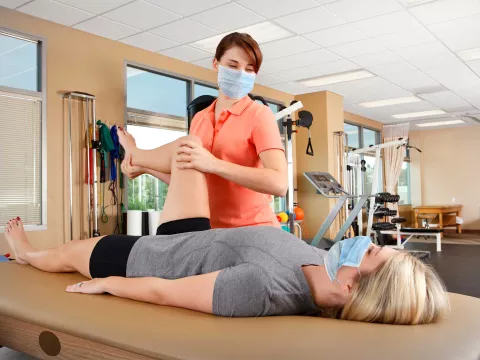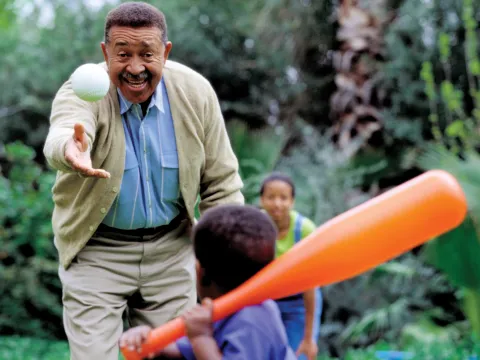- AdventHealth

Choose the health content that’s right for you, and get it delivered right in your inbox.
Fatigue in multiple sclerosis patients is very real, and it’s often one of the first symptoms to develop. According to the National MS Society, 80% of individuals living with MS suffer from fatigue. There is evidence that supports that physical activity, through aerobic exercise and strength training, is an effective tool to reduce fatigue in MS patients. Physical therapists are trained to assess fatigue and provide these patients with individualized exercise programs to address this bothersome issue.
We had the opportunity to talk to Neurological Physical Therapist, Jeffrey Schmidt, PT, DPT. He’s here to answer our questions on how physical activity through a physical therapy program can help MS patients with their fatigue:
- As a physical therapist, have you witnessed MS patients' fatigue being reduced by physical activity?
-
Jeff: Absolutely. We are not sure of the exact mechanism that causes people living with multiple sclerosis to experience fatigue, but we do know that around 80% of this population suffers from it.
During a physical therapy examination, we assess different subcomponents of fatigue through a self-reported questionnaire. We assess muscular fatigue through various strength/endurance tests.
With physical therapy, we do often see a reduction in our patients’ self-report of fatigue and improvements in strength/endurance.
- How does physical activity help MS patients function better and reduce fatigue?
-
Jeff: There is an abundance of evidence that shows that physical activity leads to improvements in strength, aerobic fitness, quality of life and fatigue (among other things) in people living with MS. However, a high percentage of this population reports difficulty achieving sufficient levels of physical activity.
Physical therapy empowers individuals to become independent with an individualized exercise program to meet these physical activity recommendations. These exercise programs will typically include strength and aerobic-based exercises. These have been shown to improve fatigue, but will vary. Physical therapists can also provide education on energy conservation techniques to help patients not get fatigued as quickly.
More research is currently being done at AdventHealth to look at other forms of exercise and their impact on fatigue.
- What types of exercises might you include in an MS patient's routine and why?
-
Jeff: Everyone with MS presents differently depending on where the lesions occur in the brain and/or the spinal cord, so each MS patient should have an individualized exercise routine.
Physical therapy evaluations assess a variety of things, depending on the patient’s goals for therapy. This includes, but is not limited to: strength, range of motion, balance, walking, transfers and higher-level mobility like running and jumping. Exercises are prescribed based on the evaluation findings and should be related to the patient’s goals.
If you have any questions regarding which types of exercises would be most appropriate for you, a physical therapy evaluation would be very helpful to determine them.
- How much physical activity would you recommend to an MS patient?
-
Jeff: The Canadian Physical Activity Guidelines for Adults with Multiple Sclerosis recommends at least 30 minutes of aerobic activity two times per week, as well as strength training activity two times per week. As physical therapists, we try and encourage these guidelines as much as possible. However, our recommendations may vary based on each patient’s clinical presentation, as not all individuals with MS are able to meet these recommendations immediately.
Moving Toward Wholeness
Thank you so much to Jeffrey Schmidt, PT, DPT, for taking the time to share his professional insights on how physical activity can help address fatigue in multiple sclerosis patients.
At AdventHealth, we attend to you as a whole person. Exercising your body, mind and spirit on a regular basis is key to optimal health, and we’re here to help you get moving through more activity so you can live life to the fullest. To learn more or visit us, find your closest location.




